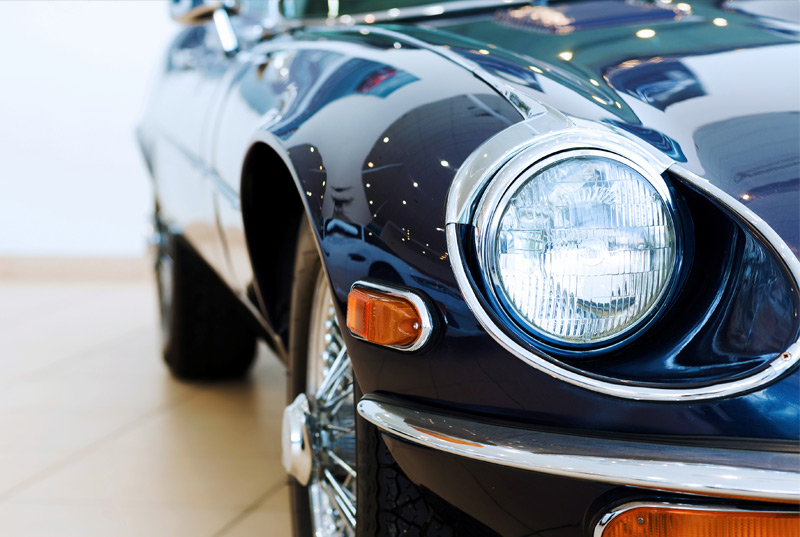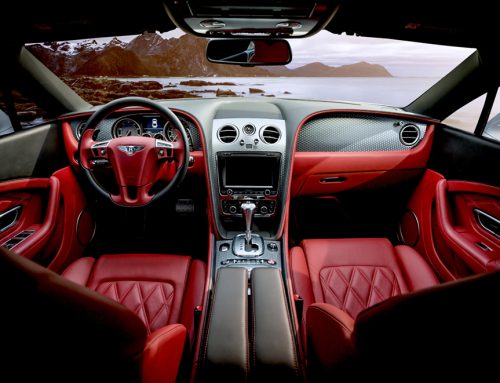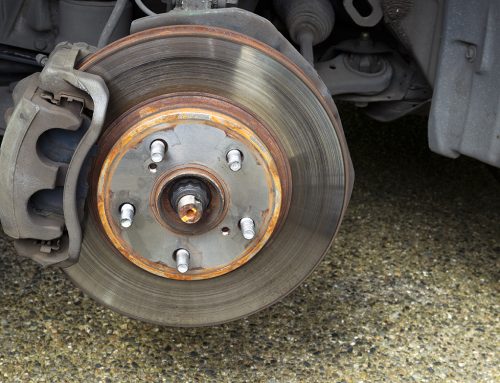The Top Ten Ways to Keep Your Car Looking New
There is an old proverb that goes, “An ounce of prevention is worth a pound of cure.”
Preventive (or preventative, if you prefer) maintenance is perhaps the best way to keep your car or truck looking new. With attention and care for both the inside and outside of your vehicle, you can keep that “showroom shine” for years. There is no one particularly thing, but rather several activities that contribute to a common goal.
Wash Frequently
Many car owners don’t realize how simply washing your car can help maintain your paint job. How often? It’s a good idea to wash the car’s exterior at least once a week, more often if you’ve been driving on muddy or salty roads. Washing your car regularly will make it look and feel better, and will also help prevent build-up of dirt and grime that can become a long-term problem. The longer dirt and grime sit on the paint, the more likely it will start to adhere to the surface.
One suggestion – use a product specifically made to wash your car and not dish soap or washing powder. Yes, dishwashing detergent will work in a pinch, but it will quickly strip off any wax or polish, leaving the car exposed. If you can, use the right product for the job.
Before washing, it’s important to spray down your car with water. This will spray off any dirt that could scratch your car if you start washing it with a sponge or cloth. It’s also a good idea to wash and rinse your car in sections so the soap doesn’t dry before it is rinsed off.
If possible, wash your vehicle in a shaded area to prevent water spotting.
After washing, don’t walk away and leave your car to air dry. Dry it using a good, quality chamois. Also, carefully clean the joints and flanges of the doors and engine hood where dirt is usually hidden from view.
Washing doesn’t end where the paint stops. Tires collect plenty of road dirt and hubcaps can become discolored. You might also think about applying a protectant to your tires after washing.
Tip: It’s also easy to forget the bottom of your vehicle since you rarely see it. But washing the undercarriage periodically can limit corrosion.
Don’t Forget the Interior
Keeping the interior of your car clean is like keeping your room clean, except everyone can see your car and gauge how dirty (or clean) you are. It’s essential to keep your vehicle’s interior looking as new as possible as the day you bought it. Crumbs, bits of paper, and dirt from shoes all contribute to a messy look.
Always clean a vehicle’s interior before washing the exterior to avoid getting dust and dirt on what would otherwise be spotless body panels. Start by vacuuming and spot-shampooing the carpets. Regular rug-cleaning spray foam will usually suffice, especially after extended periods of bad weather.
For cloth seats, vacuum the upholstery using the upholstery attachment, and shampoo as needed, using your spray foam cleaner. To repel dirt and stains, treat the seats with a fabric protector. For leather seats, use a good leather conditioner – it will moisturize your leather, reduce fading, and introduce UV protection for longer life.
Be sure to wipe down the center console for wayward crumbs and vacuum under the seats for those munchies. And, if you can, remove the front seats to achieve a more thorough vacuuming.
Speaking of wiping down, always apply cleaning products to a towel or applicator, never spray them directly on the surface you’re cleaning.
As part of your preventive maintenance routine, use rubber mats on the floorboards. They will keep dirt, mud and water on shoes from getting on the vehicles carpeting. Plus, rubber mats can be easily hosed off and will dry quickly.
Tip: Whenever it snows and gets slushy, you can’t keep your car clean, but you can help by simply knocking your boots before you get in.
Keep Food Out!
Before you have kids, your car is probably kept in decent, if not pristine condition. After you have kids, every surface in your car has the potential to turn into a sticky, crumb-covered mess.
Let’s face it. Families eat in cars and car designers and junk food marketers know it; you can buy many an alluring kid’s snack in a container that fits right into the cup holder.
So, what is the best preventive maintenance tip: keep food out!
But, of course, this might not always be possible. But there are some things you can do to help keep the “mess” to a minimum. This includes lining the cup holders with silicone cupcake liners. For toddlers, you might want to invest in a spill proof snack container or two.
Another habit to start: have the kids empty the trash every time you fill the car up with gas. It’s a good habit for adults, too.
Wax Poetically
Keeping a coat of wax on your vehicle is paramount to keeping a healthy vehicle. Wax gives your car a micro-thin layer of protection from the elements.
Obviously, a coat of properly-applied wax will make your car look shiny, but it also has other advantages. Wax protects your car’s exterior from stains caused by the elements. Some waxes even act as a barrier against fading caused by UV rays.
Wax also acts as a barricade between airborne debris and your car’s paint. Instead of having bugs and other pollutants damage the paint, they simply implant themselves in the wax, making it far more likely this debris will come off at your next washing.
How often should you wax? Remember, wax is a protective coating for your paint, but over time it breaks down. It should be applied each before winter and again, before summer.
And, remember, with wax, less is more. You don’t need to apply wax with a trowel. Only so much of the product remains on the paint’s surface. Lay it down thin!
Also, use a reputable brand, apply it in the shade to help keep the wax from drying to quickly.
Tip: Occasionally, the paint should also be polished to restore clarity to the surface. Polishing once a year or so will increase the life of the wax and help maintain the paint.
Keep it in a Garage at Night
One of the best ways to keep your vehicle looking like new is to keep it in the garage at night. This protects your vehicle from tree residue, bird droppings, snow, rain and general grime from passing cars.
You might think that damage to the vehicle’s exterior stems from the midday heat and dust that bake the dirt into the paint; surprisingly, however, the most destructive time is at night, when the cooler moisture condensates on the surface of the car.
The next best thing to a garage would be to keep the vehicle under an overhang at night to reap some of the same benefits. Car covers can be helpful, but with time, they can be a hassle as well as too dirty to put on your car. They are best suited if your car is going to sit in your driveway for an extended period.
#%&*%#@* Birds!
Birds must have a diabolical sense of humor, because no matter how far away you park from a tree, one of those little buggers will let fly and leave a deposit on your paintwork.
Unfortunately, bird droppings are no joke. They are dangerous! Bird droppings literally contain acid that can damage the paint surface. Allowed to sit on the paint for even a short period, droppings can start to etch the paint. The longer they sit, the more damage they can do. And it’s even worse under direct sunlight.
Tip: Experts tells us to keep a bottle of quick-detail spray and a couple of microfiber towels in the car to take care of these messes as soon as they are noticed.
Clay Barring
One of the safest ways to get a lustrous finish is to use a clay bar.
Auto aficionados swear by clay bars. They play a dual role of both protecting and adding shine to your vehicle’s paint surfaces.
A clay bar is used to remove those stubborn bonded contaminants. It will remove everything off your vehicle’s surface, including wax, and restore “smoothness” to the paint.
Begin by kneading the clay bar into a flat wafer and use a detailer as a lubricant. Hold it in the palm of one hand and run it across the vehicle’s surface. Clay bar one section at a time. Once a section is rubbed adequately with a clay bar, wipe with a fresh microfiber towel.
When should you think about using a clay bar? If, after washing your car, it still feels rough to the touch, it’s time to think about clay barring.
Tip: Most new car owners think that a newer car doesn’t need to be clay barred. This is not necessarily true. Contamination doesn’t discriminate between a new and old vehicle.
Not a do-it-yourselfer. Ask the experts at DoubleTake Auto about clay barring.
Fix Small Scratches
Inspect your car’s bodywork regularly and fix small scratches and chips a.s.a.p. Doing so will help prevent the early onset of rust.
Your initial line of attack is a compound that can be applied by hand using applicator pads, then wiped away soon after applying. Sometimes, you might have to repeat the application two, three or four times.
Some scratches are too deep and only a touch-up paint will repair them. Most new car dealers have small bottles of paint for the vehicles they sell/service that are well suited for touch-ups.
First, clean the damaged surface and then carefully apply the paint sparingly. If rust is already present, lightly sand the area and apply a thin coat of primer to any bare area before you apply paint.
Paintless Dent Removal
It’s impossible to keep from eventually getting a ding or dent in your vehicle’s surface, especially in the door. But the good news is, you can do something about it. Paintless Dent Repair (PDR) is changing the world of ding and dent repair.
PDR is an industry recognized repair process that involves the removal of hail dents or other types of damage from a vehicle’s exterior surface without disturbing the finish. PDR is fast, safe and saves hundreds of dollars. Fact is, PDR is the fastest, most affordable and least intrusive process of vehicle dent repair.
PDR works best when the damage consists of:
- Smooth, shallow dings
- Creases and dents ranging in diameter from dime-sized to football-size.
- Dents in plastic bumpers that have no holes, tears or paint damage and are still fully affixed to the vehicle.
Let the experts at DoubleTake Auto evaluate your damage at no cost to you.
Complete Detailing
Achieving a like new vehicle after 10 years will certainly require preventive care. Unfortunately, most people will wait until the vehicle is so bad, something has to be done. That’s like waiting until the leaves turn brown before you water your potted plants.
That’s why experts recommend that you have your vehicle detailed every six months or so to maintain your vehicle’s finish.
People might consider a full-service detail only for a special occasion or when there is a problem. Think of detailing as a spa treatment for your vehicle. Simply stated, auto detailing is the practice of making a car look it best, without relying on extreme measures such as dismantling or repairing.
See the detailing experts at DoubleTake Auto for complete information.
To Sum It Up . . .
The most common hurdle most people face in keeping their vehicle looking like new for 10 or more years is the money that goes toward the vehicle on a regular basis. Keep focused on that goal and the savings realized after you own the vehicle is far greater than the amount spent periodically for regular upkeep.






